Table of Contents
- Introduction: The Best Peppers for Cooking
- Top 10 Common Peppers for Cooking (Ranked by Versatility & Usefulness)
- Understanding Pepper Heat: Scoville Scale Explained
- Best Peppers for Different Dishes
- Practical Tips for Using Common Peppers in Your Cooking
- Buying Guide: How to Choose the Perfect Pepper
- Storage & Handling Tips
- Spicy Recipes to Try with Common Peppers
- Frequently Asked Questions About Common Peppers
- Conclusion: Spice It Up With Confidence
Introduction: The Best Peppers for Cooking
Looking for the best peppers to use in your cooking? This comprehensive guide covers the top 10 common peppers you should know, including their heat levels, flavor profiles, best uses, and practical tips for using them in your kitchen. Whether you're a beginner or an experienced cook, this guide will help you choose the right pepper for every dish.
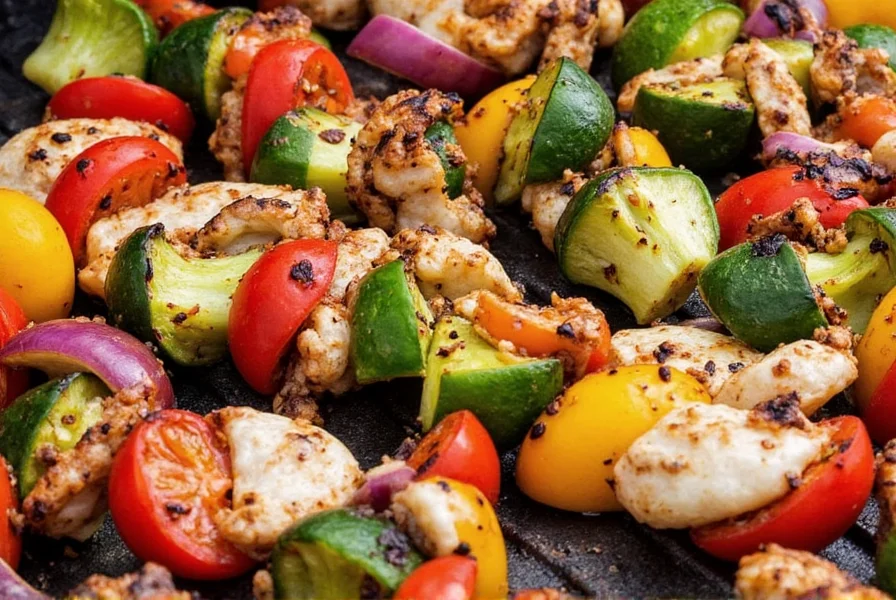
Top 10 Common Peppers for Cooking (Ranked by Versatility & Usefulness)
Based on culinary expertise and common usage in professional kitchens, here are the top 10 most versatile peppers for home cooking:
| Pepper Name | Scoville Units | Flavor Profile | Best Used For |
|---|---|---|---|
| Bell Pepper | 0 SHU | Sweet, crisp, vegetal | Stir-fries, salads, stuffed dishes |
| Jalapeño | 2,500–8,000 SHU | Fruity, grassy, smoky when roasted | Salsas, nachos, pickling |
| Hatch Green Chile | 2,500–30,000 SHU | Smoky, earthy, slightly sweet | Southwestern dishes, chiles rellenos |
| Poblano | 1,000–2,000 SHU | Rich, earthy, mildly spicy | Mole sauce, stuffed peppers (chiles rellenos) |
| Ancho (Dried Poblano) | 1,000–2,000 SHU | Deep, fruity, smoky | Mole, soups, sauces |
| Cayenne | 30,000–50,000 SHU | Sharp, biting heat | Spice blends, hot sauces, marinades |
| Serrano | 10,000–23,000 SHU | Grassy, bright, sharp spice | Salsas, garnishes, cocktails |
| Thai Chili | 50,000–100,000 SHU | Intense, citrusy, floral | Thai curries, stir-fries, spicy soups |
| Ghost Pepper (Bhut Jolokia) | ~1,000,000 SHU | Earthy, smoky, explosive heat | Extreme heat dishes, hot sauces, challenges |
| Shishito Pepper | 50–200 SHU | Smoky, slightly bitter, occasionally spicy | Tapas, appetizers, grilled dishes |
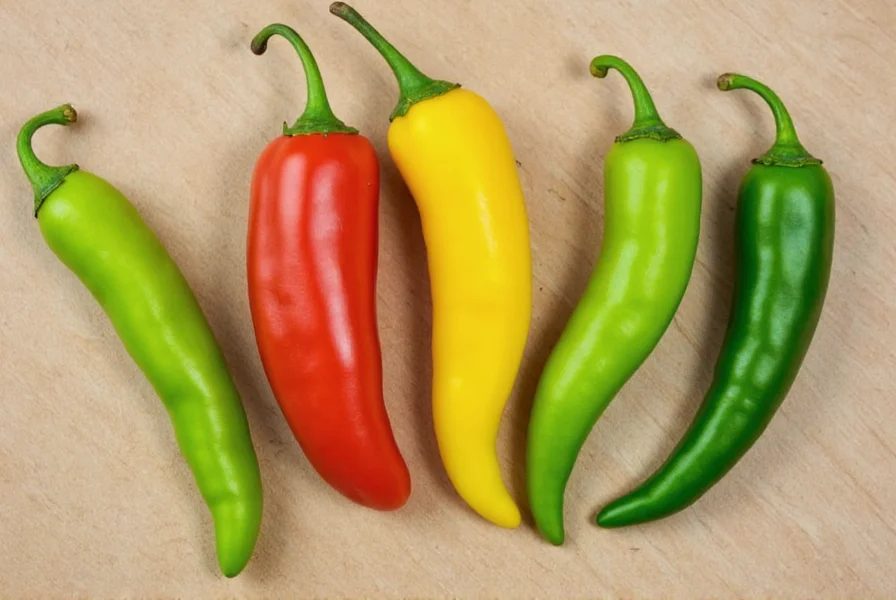
Understanding Pepper Heat: Scoville Scale Explained
The Scoville Scale measures the spiciness of peppers using a unit called SHU (Scoville Heat Units). Named after American pharmacist Wilbur Scoville, it originally relied on human taste testers but is now determined chemically by measuring capsaicin content. This scale is widely recognized by culinary experts and food scientists.
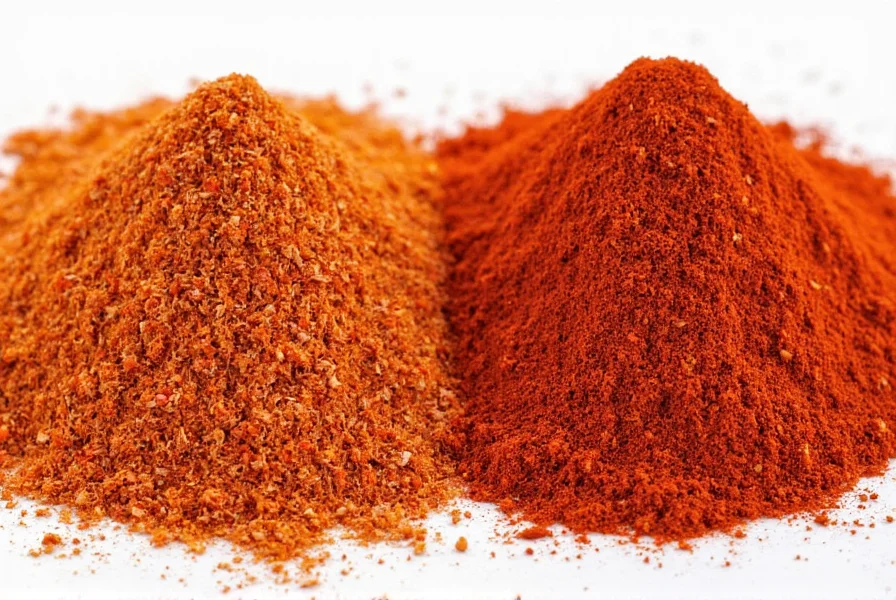
Here's a breakdown of how these common peppers compare:
- No Heat: Bell Pepper (0 SHU)
- Mild: Poblano, Shishito (under 2,000 SHU)
- Medium: Jalapeño, Serrano (up to 23,000 SHU)
- Hot: Cayenne, Thai Chili (50,000+ SHU)
- Extreme: Ghost Pepper (over 1 million SHU)
If you're new to spicy food, start with milder peppers like jalapeños or poblanos and work your way up as your palate adjusts. And remember: ripeness matters! Red jalapeños are often hotter than green ones because they've had more time to develop capsaicin.
Best Peppers for Different Dishes
Here's how to choose the perfect pepper for specific dishes:
- Best for Salsa: Jalapeño (fresh or roasted), Serrano, Habanero (for extra heat)
- Best for Stir-Fry: Bell Pepper (all colors), Thai Chili (for Asian dishes)
- Best for Soups & Stews: Poblano, Ancho, Hatch Green Chile
- Best for Mexican Cuisine: Poblano, Jalapeño, Hatch Green Chile, Ancho
- Best for Thai Cuisine: Thai Chili, Serrano
- Best for Beginners: Bell Pepper, Shishito, Poblano
Practical Tips for Using Common Peppers in Your Cooking
Now that you know which pepper brings what to the table, here are some pro tips for incorporating them into your meals without setting your mouth on fire:
- Add at different stages: Toss fresh jalapeños into salsa at the end for crunch, or roast Hatch chiles before adding to enchiladas for deeper flavor.
- Remove seeds and ribs: Want less heat? Simply scrape out the inner parts where most of the capsaicin lives.
- Use gloves: Especially when handling super-spicy peppers like cayenne or ghost pepper. Capsaicin sticks to skin and causes serious irritation.
- Dairy helps!: If things get too spicy, a dollop of sour cream or yogurt can cool things down quickly.
- Roast and peel: Bell peppers, poblanos, and Hatch chiles benefit greatly from roasting over an open flame or under the broiler. It enhances sweetness and adds smokiness.
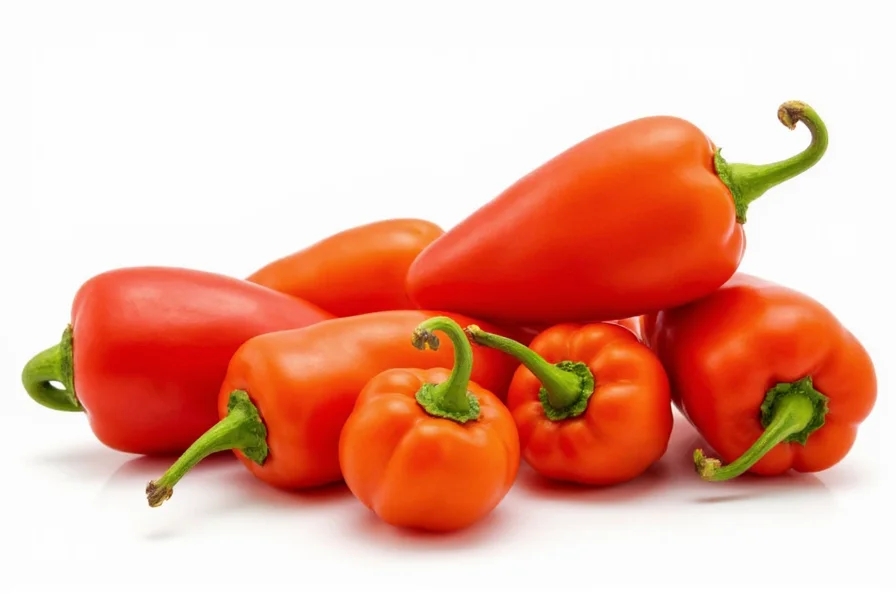
Buying Guide: How to Choose the Perfect Pepper
Whether you're shopping at a farmer's market or grabbing a bag at the grocery store, here's how to spot the best peppers:
- Look for firmness: Fresh peppers should feel solid with no soft spots or wrinkles.
- Check the color: Bright colors indicate ripeness. Red bell peppers are sweeter than green ones, and red jalapeños are usually spicier than unripe green versions.
- Size doesn't always matter: Small serranos pack more punch than larger jalapeños. Don't judge by looks alone!
- Buy seasonally: Most peppers peak in late summer through early fall, though many are available year-round.

Product Spotlight: Dried vs. Fresh Peppers
When choosing between fresh and dried peppers, consider your use case:
| Type | Pros | Cons | Best For |
|---|---|---|---|
| Fresh Peppers | Crunchy texture, immediate flavor | Short shelf life, seasonal availability | Salsas, raw dishes, roasting |
| Dried Peppers (e.g., Ancho, Guajillo) | Long shelf life, deep flavor, versatile | Need soaking/rehydrating, less accessible in some regions | Mole, sauces, soups |
Storage & Handling Tips
Want your peppers to last longer without losing flavor?
- Refrigerate: Store whole, unwashed peppers in a plastic bag in the crisper drawer for up to a week.
- Freeze: Slice and freeze jalapeños, bell peppers, or even roasted Hatch chiles in airtight bags. They're perfect for future stews and soups.
- Dehydrate: Use a dehydrator or oven to dry shishitos or serranos into spicy snacks or homemade chili flakes.
- Pickling: Make jalapeño poppers or tangy pepper slices by pickling in vinegar with garlic and spices.
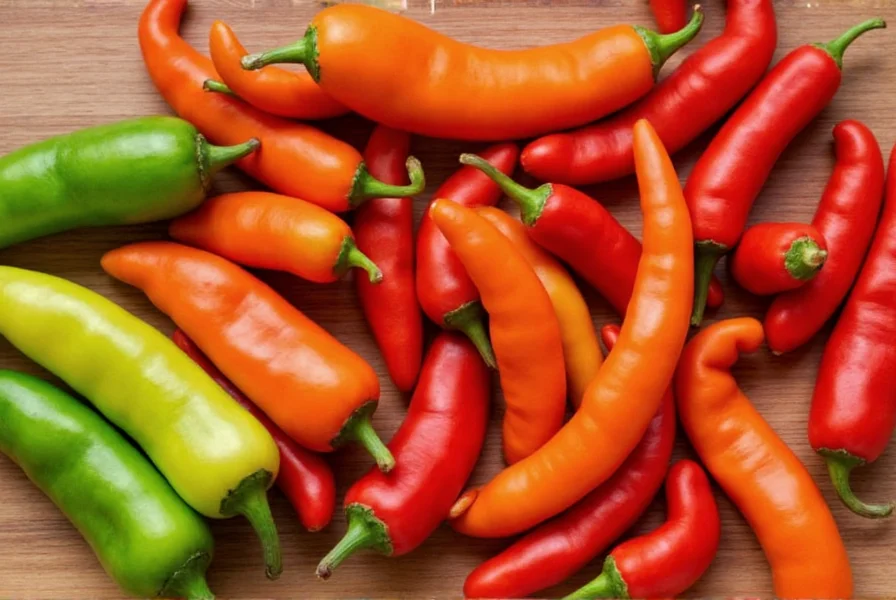
Spicy Recipes to Try with Common Peppers
Ready to turn up the heat in your kitchen? Here are some delicious ideas to try:
- Bell Pepper Stir-Fry – Sauté colorful bell peppers with sesame oil, garlic, soy sauce, and your favorite protein.
- Roasted Poblano Quesadillas – Charred poblanos, melted cheese, and a sprinkle of cilantro make a perfect lunch.
- Thai Basil Pork with Thai Chilies – A fast, fragrant dish with minced pork, holy basil, garlic, and Thai chilies.
- Cayenne-Infused Honey Hot Wings – A sweet-and-fiery combo that's great for game nights.
- Ghost Pepper Popcorn – Not for the faint-hearted! Lightly dust popcorn with ghost pepper powder for a slow-burning thrill.
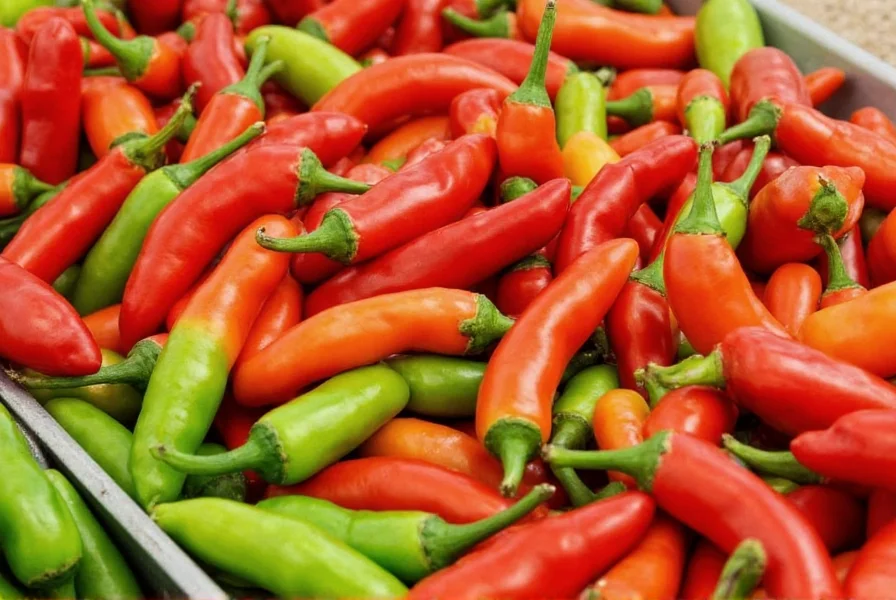
Frequently Asked Questions About Common Peppers
Here are answers to the most common questions home cooks have about selecting and using peppers:
What's the mildest common pepper for beginners?
Bell peppers are completely non-spicy (0 SHU) and ideal for beginners. If you want subtle warmth without intense heat, try shishito peppers (50-200 SHU) or poblanos (1,000-2,000 SHU). Both offer gentle flavor without overwhelming spice.
How can I reduce the heat of a pepper while cooking?
Scrape out all seeds and white ribs (placenta) where capsaicin concentrates. For milder results, soak sliced peppers in salted water for 15 minutes before cooking. Adding dairy like yogurt or sour cream during cooking also neutralizes heat effectively.
Can I substitute one pepper for another in recipes?
Yes! For mild dishes: replace poblanos with bell peppers. For medium heat: use jalapeños instead of serranos (but use half the quantity). For hot applications: cayenne can substitute for Thai chilies at 1:3 ratio. Always adjust quantities based on Scoville ratings.
Why are some bell peppers sweeter than others?
Ripeness determines sweetness. Green bell peppers are unripe and more bitter. As they mature to yellow, orange, and red, sugar content increases significantly. Red bell peppers contain nearly 2x the beta-carotene and are noticeably sweeter than green varieties.
How do I handle super-hot peppers safely?
Always wear nitrile gloves when handling ghost peppers or habaneros. Work in a well-ventilated area (capsaicin becomes airborne when cutting). Never touch your face, and wash all surfaces with soapy water afterward. For extra protection, wear safety goggles to prevent eye irritation.
Do pepper heat levels change when cooked?
Yes! Roasting or grilling redistributes capsaicin, often intensifying immediate heat perception. However, long cooking times (like in stews) mellow peppers as capsaicin breaks down. Drying peppers concentrates heat – ancho peppers (dried poblanos) feel spicier than their fresh counterparts despite identical SHU ratings.
Conclusion: Spice It Up With Confidence
Whether you're a seasoned spice lover or a curious beginner, understanding common peppers is key to unlocking bold flavors and satisfying meals. From mild bell peppers to face-melting ghost peppers, each one has its place in the culinary world — and now you know exactly where to put them.
So next time you're at the market, don't be afraid to reach for that shiny serrano or mysterious-looking poblano. With this guide in hand, you're fully equipped to handle whatever heat comes your way.
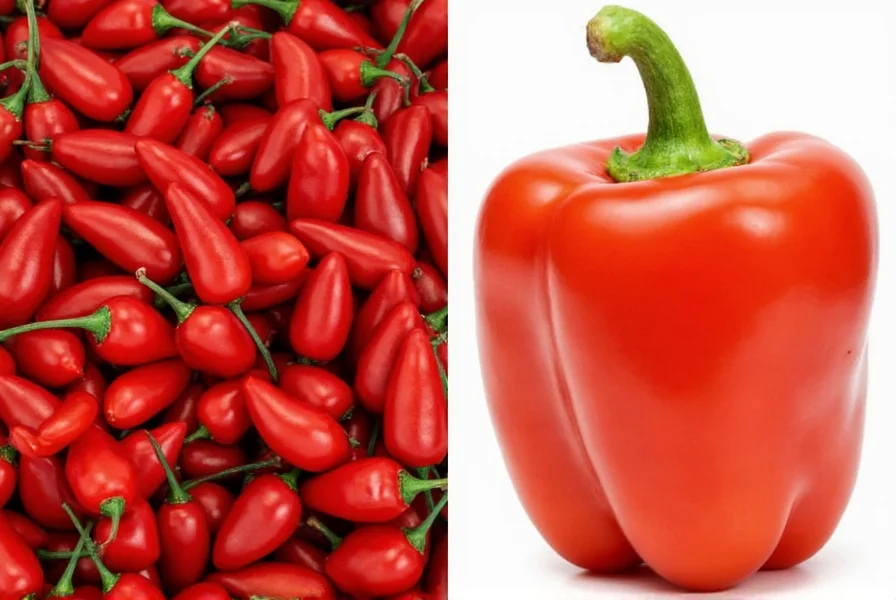

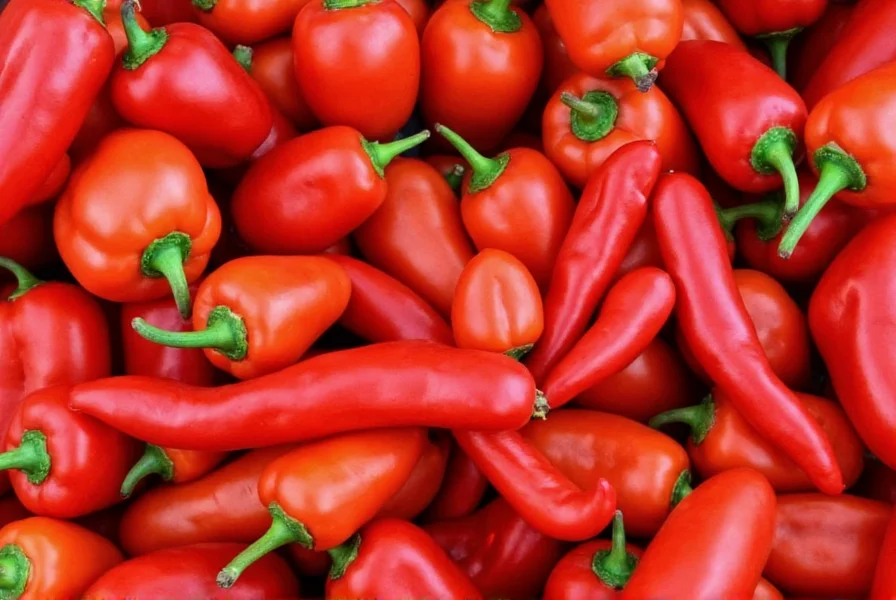









 浙公网安备
33010002000092号
浙公网安备
33010002000092号 浙B2-20120091-4
浙B2-20120091-4